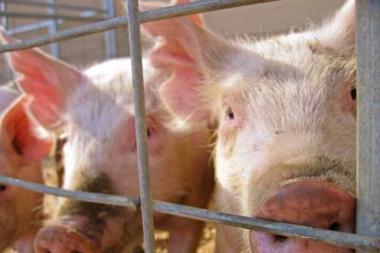Pandemics, internal displacement and storm surges loom large in 2009, according to a view from Maplecroft
The outbreak and spread of influenza A/H1N1 comes as a reminder of the full range of risks faced by businesses operating at the global level. In addition to Maplecroft’s own research on influenza pandemics, we have also seen new research from the Internal Displacement Monitoring Centre (IDMC) on internal displacement due to conflict and from the World Bank on storm surges. These three sources provide increasing evidence for why businesses need robust, integrated emergency response systems.
Maplecroft’s Influenza Pandemic Risk Index (IPRI) reveals that countries most at risk of the outbreak and emergence of swine or avian flu in humans, and human-to-human contraction, are those that are poor and densely populated. Rural areas where living quarters are in close proximity to poultry and swine are most susceptible. The risk is compounded further by poor hygiene, lack of access to clean water and sanitation, as well as poor health education.
Vietnam, Bangladesh, Haiti, Ethiopia, Romania, China, Somalia, Chad and Indonesia rank amongst those countries most at risk of emergence. Interestingly, a number of developed countries, such as the United Kingdom, Germany, Italy, Canada, Japan, and the Netherlands, are highly exposed to the risk of spread of avian influenza. This is due to busy international airports filled with passengers from countries where the risk of emergence is greatest. High levels of urbanization and population density also account for the high exposure in developed countries.
Importantly, the capacity of a country to contain the spread of human influenza depends on such factors as health infrastructure, education, information and communication networks and governance; all of which are areas where developed countries enjoy a distinct advantage over their less developed counterparts. Chad, Equatorial Guinea, Central African Republic and Brunei rank as the top countries in terms of their lack of capacity to contain an influenza outbreak.
The risk to business posed by an influenza pandemic outbreak includes the loss of critical personnel through illness or death as well as a drop in the supply of input products and services from countries where the risk of spread is high. Local businesses may also be forced to close. For instance, in early May 2009 Mexico’s Finance Secretary Agustin Carstens said that the A/H1N1 outbreak cost the Mexican economy at least US$2.2bn in the first 10 days after the epidemic was announced. Restriction on movement (and hence consumers and deliveries) coupled with people’s inclination to reduce contact with large groups in public spaces undoubtedly contributed to Mexico’s economic loss.
Displacement
Internal displacement as a result of violence in the meantime shows no signs of abating on a global scale. A May 2009 report by the IDMC revealed that 26m people have been internally displaced by conflict, generalised violence or human rights violations over the course of 2008. As many as 4.6m were newly displaced last year – 900,000 more than the 3.7m newly displaced individuals registered in 2007. New large-scale, conflict-related displacements were recorded in the Philippines (600,000), Sudan (550,000), Kenya (500,000), DR Congo (at least 400,000), Iraq (360,000), Pakistan (over 310,000) and Sri Lanka (230,000) from a longer list in 2008.
“The A/H1N1 outbreak cost the Mexican economy at least US$2.2bn in the first 10 days after the epidemic was announced.
Large-scale internal displacement from conflict disrupts local consumption patterns, business supply chains and the economies of affected countries. Businesses that operate in these countries also face the risk of being associated with a regime that may be directly or indirectly responsible for forced internal displacement. This risk is heightened when victims receive no or minimal compensation for the loss of property and livelihoods, or are subjected to the worst forms of human rights violations such as sexual slavery and forced recruitment as fighters.
Storm surges
A more unprecedented risk is that posed by storm surges – defined as a flood of water caused by wind and low pressure. A May 2009 report released by the World Bank, ‘Sea-Level Rise and Storm Surges’, reveals that more than 50% of the coastal populations of a number of African countries – including Djibouti, Togo, Mozambique, Tanzania and Sudan – are at risk of storm surges in the future. Nigeria’s coastal cities of Bugama and Okrika, are particularly exposed, as are Vietnam’s Hai Phong and Bangladesh’s Barisal.
The destruction of crucial logistics routes and communication infrastructure, the loss of raw materials and input products that feed into the business supply chain, and the large-scale displacement of consumers and staff, all define the risk at hand. That many developing countries do not have the infrastructure or means to tackle rapid large-scale flooding means these countries – and the businesses that operate within them – will be adversely affected for longer than more developed countries.
The multiplicity of risks associated with an influenza outbreak, internal displacement and storm surges require that companies establish a robust system of emergency response (including alternative supply chain contingencies) and are prepared for the worst case scenario. This could involve the large-scale loss of staff in a number of countries due to influenza outbreak or the elimination of a major supplier following storm surge. It could also involve the loss of demand or reduced access to transportation routes in developing markets as a result of large-scale internal displacement and escalating internal conflict.
Anthony Skinner is a Principal Analyst at global risks specialist, Maplecroft


















No comments yet